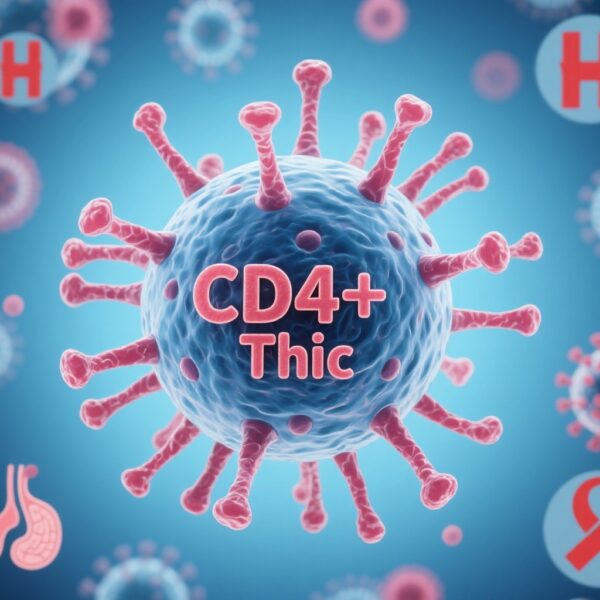Highlight
- Nearly half of adults living with HIV in Washington, DC, have at least one dermatologic condition despite modern antiretroviral therapy (ART).
- Incidence of infectious, inflammatory, and malignant dermatologic diseases has significantly declined from 2011 to 2024.
- Risk factors for dermatologic conditions include lower nadir CD4 count, older age, public insurance, prior opportunistic infections, and female sex, notably with a sixfold increased risk of cutaneous malignancies in cisgender females.
- Persistent dermatologic morbidity underscores the need for tailored dermatologic care integrated within HIV services, particularly addressing social determinants and immune restoration.
Background
Dermatologic diseases (DDs) have long presented significant morbidity among people with HIV (PWH), stemming from immunosuppression, opportunistic infections, inflammation, and increased cancer risk. In the era before effective combination antiretroviral therapy (ART), skin manifestations were often severe and frequent. With advances in ART improving immune function and survival, the epidemiology of DDs in PWH has shifted. However, comprehensive data characterizing the current prevalence, incidence, and risk drivers remain limited, particularly in diverse urban populations. Washington, DC, with its high HIV burden and ethnically diverse population, provides a unique opportunity to investigate dermatologic outcomes in the modern ART era.
Study Design
This longitudinal cohort study analyzed data from the DC Cohort, comprising 11,738 adults with HIV enrolled between 2011 and 2023. Dermatologic diseases were identified via validated ICD-9 and ICD-10 coding from electronic medical records and categorized into three main groups: infectious dermatoses, inflammatory dermatoses, and cutaneous malignancies (CM). Prevalence represented the proportion with ≥1 dermatologic diagnosis at any time, while incidence was measured as new dermatologic diagnoses per 1,000 person-years annually. Multivariable logistic regression determined independent risk factors associated with dermatologic disease prevalence. Key covariates included demographic factors (age, sex, race/ethnicity), HIV-related clinical variables (nadir CD4 count, prior opportunistic infections), and structural factors such as insurance status.
Key Findings
Prevalence and Incidence
Overall, 49.4% of cohort participants had at least one dermatologic diagnosis, with infectious dermatoses being most common (41.4%). Inflammatory dermatoses and cutaneous malignancies were less frequent but clinically relevant. Importantly, incidence rates showed a significant decline over the 13-year observation period (p < 0.0001 for all categories). Infectious dermatoses incidence decreased drastically from 463 to 41 cases per 1,000, inflammatory dermatoses from 306 to 62 cases per 1,000, and cutaneous malignancies from 31 to 6 cases per 1,000.
Risk Factors
Multivariable analysis revealed that lower nadir CD4 counts were consistently associated with increased risk across dermatologic disease categories, highlighting the role of immune suppression. Older age contributed to greater risk, reflecting cumulative comorbidities and immune aging. Public insurance—a proxy for lower socioeconomic status—and history of prior opportunistic infections also independently conferred elevated risk.
Notably, cisgender females had more than sixfold greater odds of developing cutaneous malignancies compared to male counterparts, an unexpected sex disparity warranting further investigation.
Expert Commentary
This large, well-characterized cohort offers robust evidence that despite transformative ART, skin disease remains a major morbidity factor in PWH. The dramatic reduction in incidence speaks to improved HIV care and immune reconstitution, yet persistent disease highlights residual immune dysfunction and social determinants of health affecting this population. The striking sex difference in cutaneous malignancy risk points toward possible behavioral, hormonal, or care-access differences, underscoring the need for sex-specific dermatologic surveillance.
The reliance on ICD coding is an inherent limitation, risking misclassification and under-detection, especially for milder conditions or those managed outside dermatology specialty clinics. Variability in access to dermatologic expertise across sites may influence reported rates. Future studies incorporating clinical examination data and patient-reported outcomes could refine prevalence estimates.
Conclusion
In the modern ART era, dermatologic disease incidence among PWH in Washington, DC has significantly declined but remains prevalent. Immune status, demographic characteristics, and structural factors continue to drive risk. Optimal HIV care should integrate dermatologic screening and tailored interventions, particularly for at-risk groups such as older adults, those with prior immunosuppression, and cisgender women. Addressing social determinants and enhancing dermatologic access may further reduce the dermatologic burden, improving overall quality of life for people with HIV.
Funding and ClinicalTrials.gov
Details on funding sources and clinical trial registration were not provided in the source publication.
References
Akiska YM, Byrne M, Nasseri M, Koay A, Horberg MA, Monroe A, Friedman A, Rakhmanina N; DC Cohort Executive Committee. Prevalence, Incidence, and Risk Factors for Dermatologic Conditions in People with HIV in the Modern Antiretroviral Era: A Cohort Study in Washington, DC. J Am Acad Dermatol. 2027 Sep 30:S0190-9622(25)02804-X. doi: 10.1016/j.jaad.2025.09.020. Epub ahead of print. PMID: 41085508.


